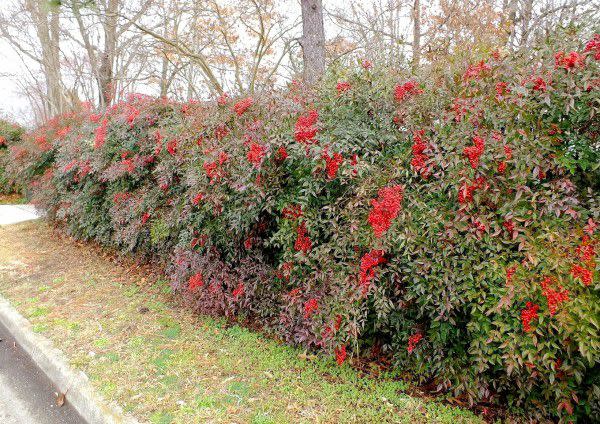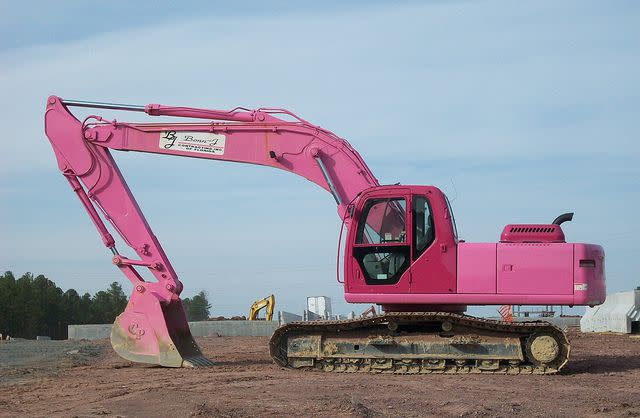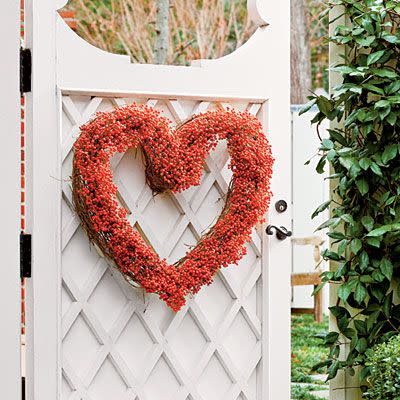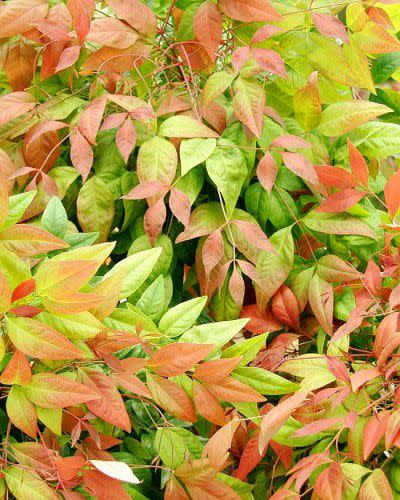Just Try To Kill Nandina!

A nice border of well-pruned nandinas. Photo: genesgarden.blogspot.com
One of the first of many commands my wife gave me after we got married was to rip up all the nandinas in front of my house. "It makes the house look abandoned," she stated. "If you don't do it, I will."
Now that's a threat an experienced gardener like Grumpy loves to hear. Because I know what it takes to tear out an established clump of nandina. This. (We don't have one.)

emYou mean you DON'T have a pink backhoe? Photo: NCDOTcommunications./em
See, regular nandina (Nandina domestica), also humorously known as "heavenly bamboo," grows a nearly impenetrable network of thick roots that keeps expanding every year. Over time, a small clump grows into a thicket the approximate size of Delaware. Extracting a clump using a pick or shovel goes about as fast as chiseling your way out of Alcatraz. Plus, every little piece of root you leave behind grows another plant. So when my lovely bride threatened to treat the nandina with extreme prejudice, I responded thusly.
"Have fun!"
Over the course of a weekend, the nandina clump shrank with the speed of an Antarctica ice sheet calving off icebergs. The nandina won. It always wins.
The Plant We Love to Hate And that's precisely why so many people hate this import from Japan. It's too easy to grow. It grows in sun. It grows in shade. It grows in any well-drained soil. No pests bother it, not even deer. It laughs at droughts. Winter cold is its only obstacle. Below zero temps kill it to the ground. Then it grows back.

emPhoto: freerepublic.com/em
Rush to Judgment? But wait a second. Why should a plant be hated just because any moron can grow one? Morons need gardens too. And nandina does have some good points. In the South, it's evergreen. The attractive green foliage turns burgundy and scarlet in winter. And no plant produces showier clusters of bright red berries in fall and winter. They're the best berries for holiday decorating, because they're firm, dry, and last for months. If you're the artistic sort, you can use them to make something like this for your gate.

emNandina berries show you the love. Photo: Beth Hontzas/em
Try the Newer Nandinas While you may hate easy plants, nurserymen love them. So they've gone to considerable trouble in recent years to develop nandinas that grow much shorter than the typical 6-8 feet and don't spread. And if you're worried about seedlings sprouting everywhere, most of the new ones bear few or no berries. So what's the attraction? Compact, dense shapes and attractive foliage. Like this one here.

em'Blush Pink' nandina. Photo: PDSI/em
This new nandina from our Southern Living Plant Collection is named 'Blush Pink.' It grows only 2 feet tall and wide -- perfect for massing under low windows or planting in containers. New foliage emerges bright pink before turning green. In fall and winter, the leaves turn bright red. 'Flirt' nandina stays even smaller. Its new foliage emerges deep red.
Don't be a hater. It just diverts your attention from what's really important. For example, right now your kid's driving that backhoe. He just destroyed your garage.

